Digital Marketing Made Easy: What To Do When You Have No Clue
Digital marketing can feel like an uphill battle for many nonprofits. Strategies and tactics that worked a year ago are obsolete, the hottest social platforms of 2017 are irrelevant, and updates to algorithms threaten an organization’s ability to communicate their message with their audience.
Join us in this deep dive session as we demystify digital marketing for 2018 and beyond.
Don't have time to read the full article?
Download a PDF version of our newest course: Digital Marketing Made Easy(it's free).

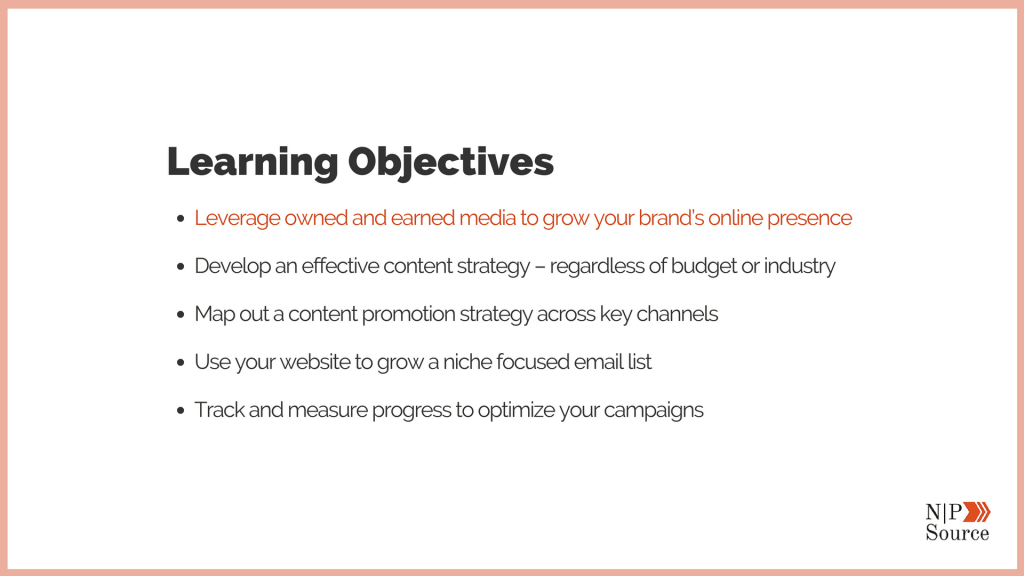
Learning Objectives
- Leverage owned and earned media to grow your brand’s online presence
- Develop an effective content strategy – regardless of budget or industry
- Map out a content promotion strategy across key channels
- Use your website to grow a niche focused email list
- Track and measure progress to optimize your campaigns
I’m really excited to be here and thank you for everyone taking the time to be here. I know you guys are all super busy. I promise to add value in today’s conversation. Let’s just dive right into it. So today we’re going to be talking about a brand-building specifically and really what my objective here today is to give you something tangible, some tactic or strategy that you can take and implement in your organization.
Immediately after this Webinar, I’m going to be a little bit been a theory at the beginning. I’ll try to do my best to add a little bit more specific context to it. First and foremost, we’re going to talk about owned and earned media and how you can leverage that to build your brand’s online presence. The kind of talk about creating an effective content strategy.
I know a lot of people have tried implementing a content strategy in the past and maybe it didn’t get the results that they were looking for. We’re going to discuss why that might be and kind of give a framework that you can use to develop your strategies moving forward regardless of budget or industry. It’s, it’s ubiquitous. I swear, I promise. Next we’re going to talk about content promotion.
I think that’s something that is really undervalued. We put a lot of emphasis on creating the content, but we don’t really talk too much about how do we promote that across all of our key channels. Next we’re going to talk about building a niche focused email list.
Regardless of what the data says or blog post headlines you’ve read, your email list is the most important ROI generating resource that you can provide because it’s building a new, a targeted audience of constituents, care about what you do and are invested in your success.
Finally, we’re going to talk about how do you track and measure that progress online through digital channels and making slight tweaks and adjustments to optimize your campaigns to really get that, a result that you’re looking for.
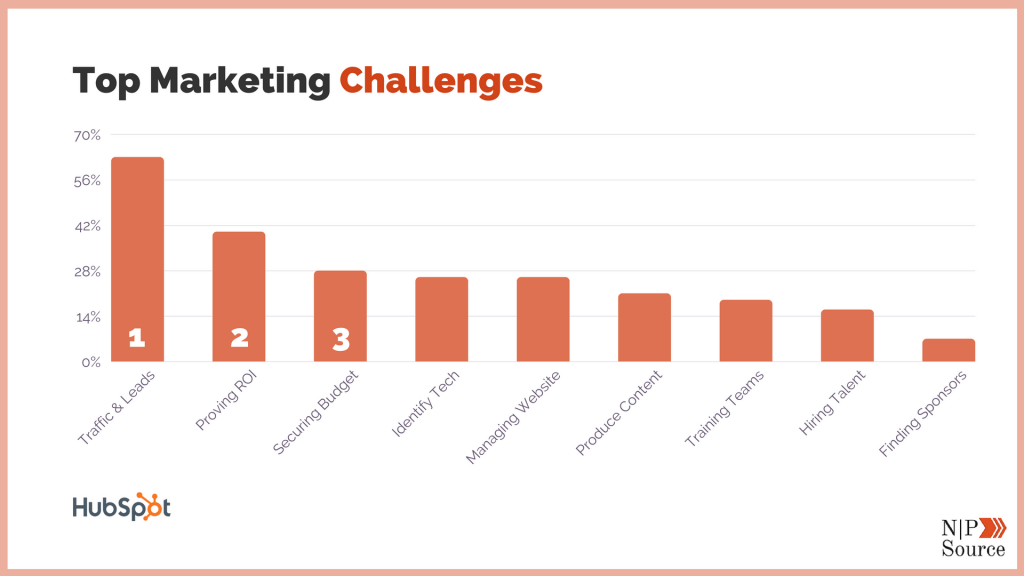
Top Digital Marketing Challenges
This is a study that was done by Hubspot, I believe it’s 2017. The data here, they do have a 2018 release I believe, but it’s really talking about some of the top marketing challenges that marketers across the globe are facing.
Number one, coming in at nearly 60 percent is generating traffic and leads, number two, proving ROI and your investments, and then securing a budget. We’re going to really focus on one and two here today in just building that audience up and, and figuring out how do we connect with people, and provide value to them.
But three is something I think, I’ve had discussions in the past with some executive directors and CEOs of other nonprofit organizations and what I found is through that conversation that, that fear of loss of investment tends to be a, an issue that a lot of people face when trying to get that, that budget for those initiatives.
So let’s focus on growing your brand’s online presence.
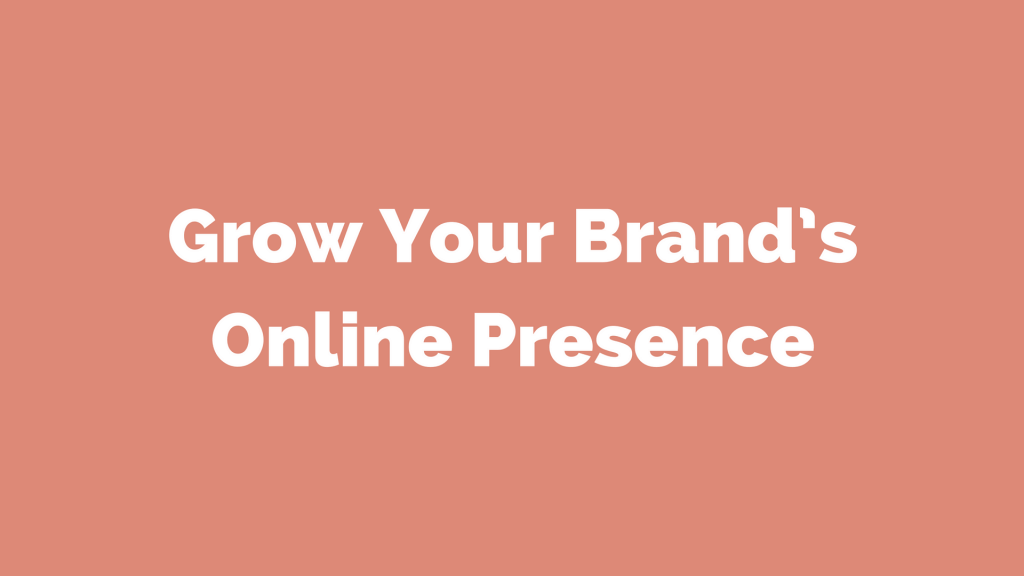
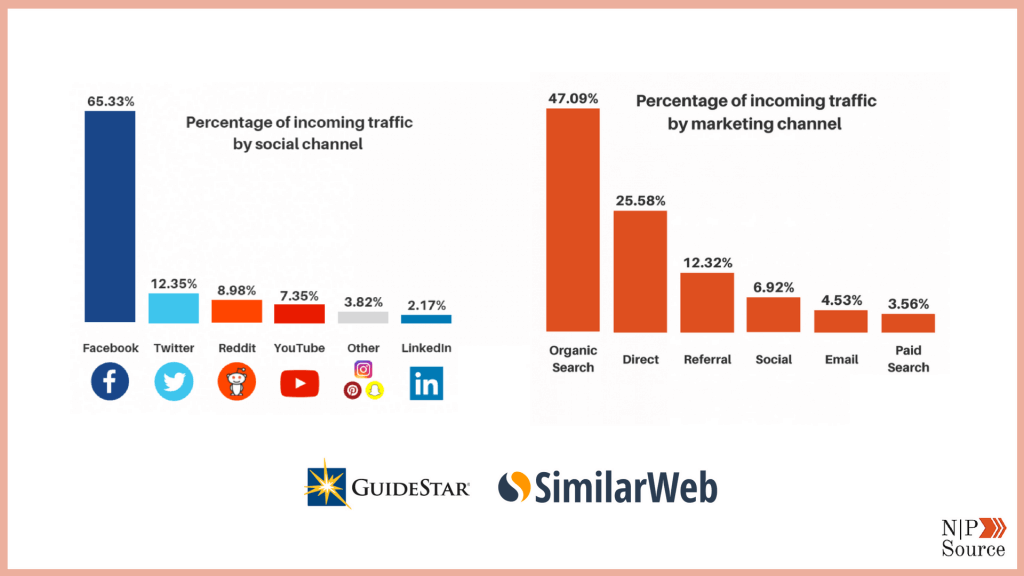
How People Are Searching For Nonprofit Websites
This is data that’s been collected and self-reported through Guidestar and SimilarWeb, SimilarWeb is a data analytics platform that tracks all sorts of web traffic and how it’s being referred to your website. And what’s really interesting is obviously Facebook is a powerhouse in this data, specifically looking at nonprofit websites.
It’s collected, I believe about a thousand organizations and then spread across different types of staff size and industry. So Facebook is obviously the powerhouse generating a lot of the traffic, but overall social, as a total contribution to traffic that’s being referred to your websites only represents about seven percent, where search is dominating really 47 percent.
If you think about it kind of makes sense. People want to see that you have a presence online, that you’re legitimate and that you’re providing current information for the communities you serve.
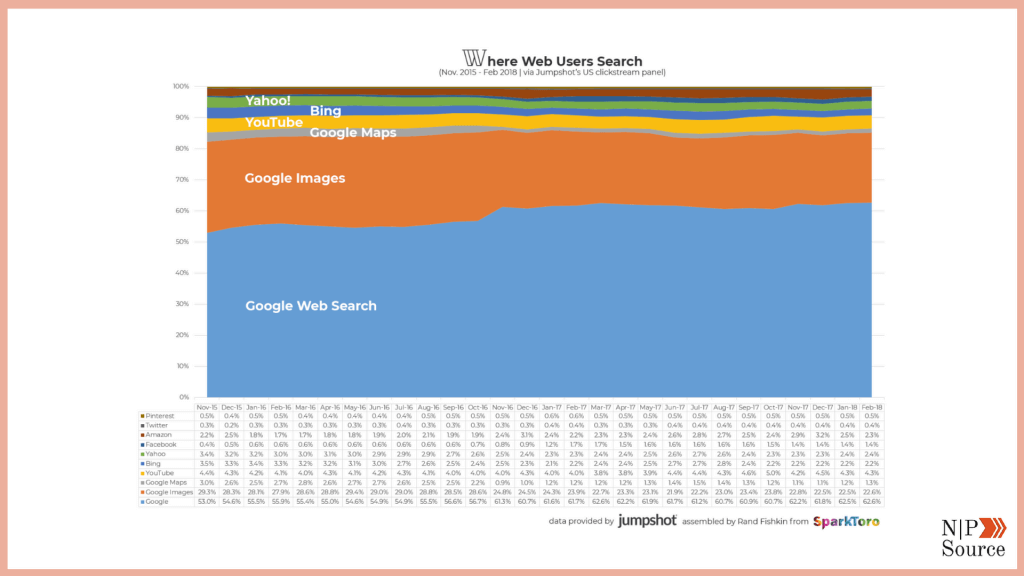
Where Web Users Search
Of course, I like to back everything that I do with an independent and verifiable source so that it’s not just me trying to blow smoke up anyone’s behind. This is data collected from Jumpshot. It’s another data analytics firm. They specifically look at traffic as it relates to being referred to your website. And as we can see in this graphic here, a lot of it is being dominated by Google.
Google web search obviously is a big one coming in at about 62 percent. And then interestingly enough, the second largest search engine in the world youtube. So really just kind of figuring out why is it important, know these brand mentions are really important. And I think a really apt example of that is the ice bucket challenge. You know, four years ago it really wasn’t a thing.
It wasn’t in anyone’s mindset, but today looking back on it, it’s an internationally known phenomenon It generates over 40,000 monthly search volume per month, and over time the campaign has raised over $210,000,000, internationally, and it will forever be synonymous with als.
That’s something that no amount of advertising spend or no amount of content can really generate. So really making sure that your positioning with purpose in your brand online is important because that something like that can happen.
All it really takes is posting a challenge online and getting one influencer in that space to latch onto it and share it within their community. And then it just spreads like wildfire. It’s something that the internet does very well and it’s, it’s a very unique phenomena. And then of course, getting to the core of this section is owned and earned media.
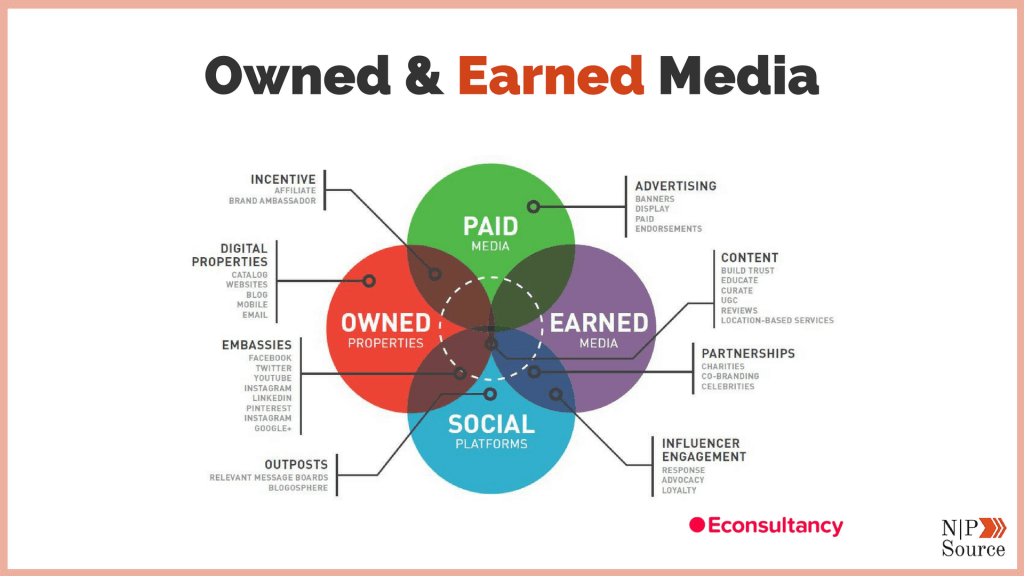
Owned And Earned Media
As you can see in this graph. There’s a lot that you can do in the marketing space, and it’s easy to see how one could get overwhelmed with all of the different things that you should be doing and investing and all of these social platforms and your blog and your website.
Where do you even start? Well, kind of taking the conversation back to the data, that we were talking about earlier with Jumpshot and how people are searching online. I really believe that focusing on owned media, which is assets that you have complete control over. It’s your blog, it’s your website, it’s your email, and then positioning that to gain your earned media, which you can think of it as your digital word of mouth marketing. It’s any type of brand mention.
Maybe someone mentions to you in a tweet or a facebook or in a form, in the context of Search Engine Optimization (SEO), which is what I’m kind of a big nerd when it comes to SEO.
A backlink on someone else’s site, referencing back to your site is one of the ultimate forms of earned media because that site is confirming to their audience that this is someone of value. We’re willing to put it our ourselves on the line for that person, by contributing that information and we believe it has value. So in that context, I think owned and earned media are some of the best ways to build a brand online, of course, distributing, all of your content across social posts.
We’ll touch upon how to do that in a little bit. It’s something that you should be doing. Then, of course, advertising is important as well if you can integrate that into all of the other campaigns that you’re doing, but again, don’t overwhelm yourself.
Take it one step at a time. Focus on trying to create, let’s say a weekly blog post or maybe a weekly video, and then build up from there, see what you’re comfortable with, see where your resources lie, and then take the next step because what often happens is people jump into it, have too much on their plate, and then nothing really gets done or it’s not integrated and often not aligned with what your goals are.
The campaign ends up falling flat and it’s really important to be consistent across all of your channels as you’re starting to create and distribute this content to your audience.
Let’s get into some more of the specifics.
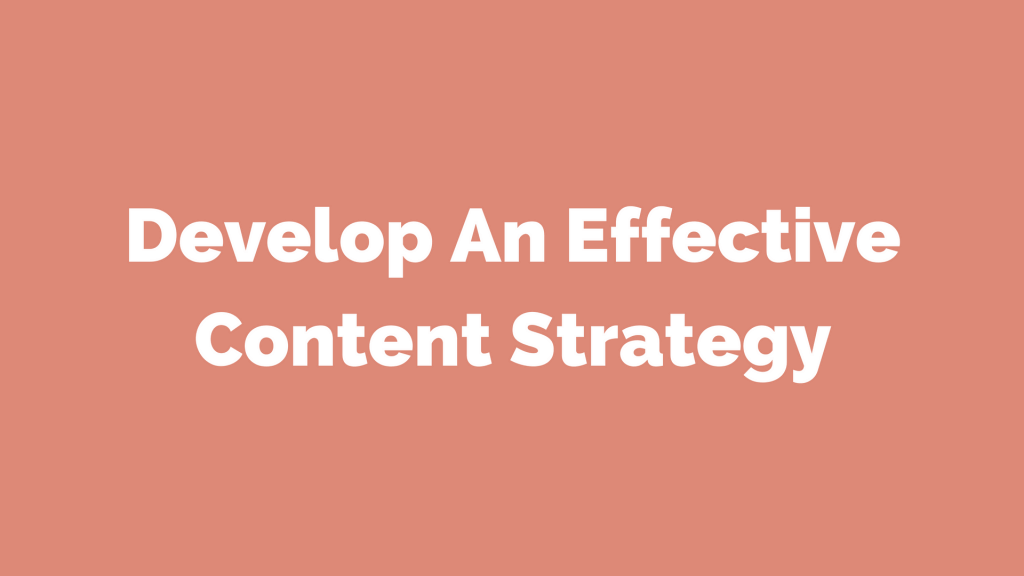
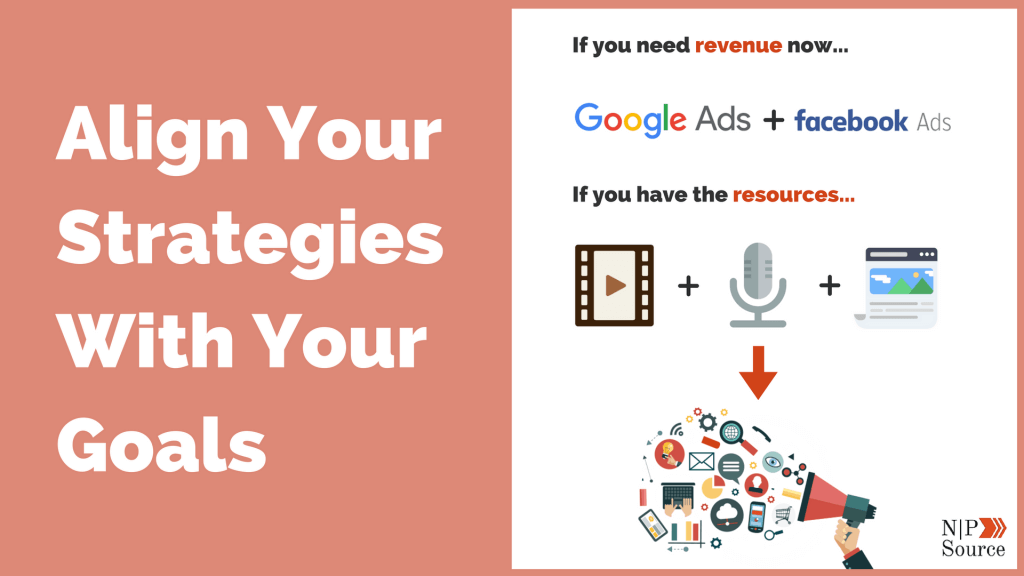
Align Digital Strategies With Marketing Goals
If you need revenue now, Google ads and Facebook ads are the best possible thing you can do. Google ads are great because if you’re a registered 501(c)3 nonprofit you get access to a $10,000 Google ad grant. It’s free. You get it every month and you can use it for all sorts of things. You can use it to generate revenue. You can use it to, encourage volunteers if you are an organization that a relies on donations of physical goods or products, Google ads can work as well.
Facebook ads are interesting because there’s a very low cost, so there’s no real barrier to entry for as little as $5 a day you can get some really good results in terms of reach or engagement. They’re also a powerhouse when it comes to connecting the data that they house with a very specific audience.
So, if you go into Facebook audience insights, you can actually use their data, their live data to create an audience group that’s tailored to whatever your audience may like a page for example. Or perhaps job titles, if you’re trying to target specific people, maybe you’re an environmental organization and you’re targeting local educators in the area.
I’m targeting people who liked pages related to the environment or have the job title of an educator that’s really, really effective.
Boosting a post can be good at times. But I really encourage you to take a few steps more than that into actually creating the campaigns because the boost posts are kind of low hanging fruit. It’s really easy to set up $10 here, $20 there. It seems appealing, but it’s not nearly as targeted. As, if you were to actually create, a Facebook ad campaign.
I would say if you don’t have in house in-house, possibly think about outsourcing that. But honestly, it’s pretty easy to learn. You can spend a little time on youtube, maybe an hour or two to really get the gist of it. And then it’s just starting to get into the platform and playing around, playing around with it.
If on the other hand, you do have resources, I really encourage that you bring your content together in a video, audio, and written format. Then use all of your channels to promote that content. And the reason why I say all three of these mediums is because you want to give your audience the ability to consume content on their own terms. Not everyone is going to be able to understand the nuances of a conversation if you have a 2000 word blog post.
Maybe they consume the content better on video. I think audio is also really important because increasingly people are taking longer and longer commutes and podcasting as, as a medium has just exploded over even the last year. I think the recent data suggests that some 43 million Americans tune into a podcast monthly.
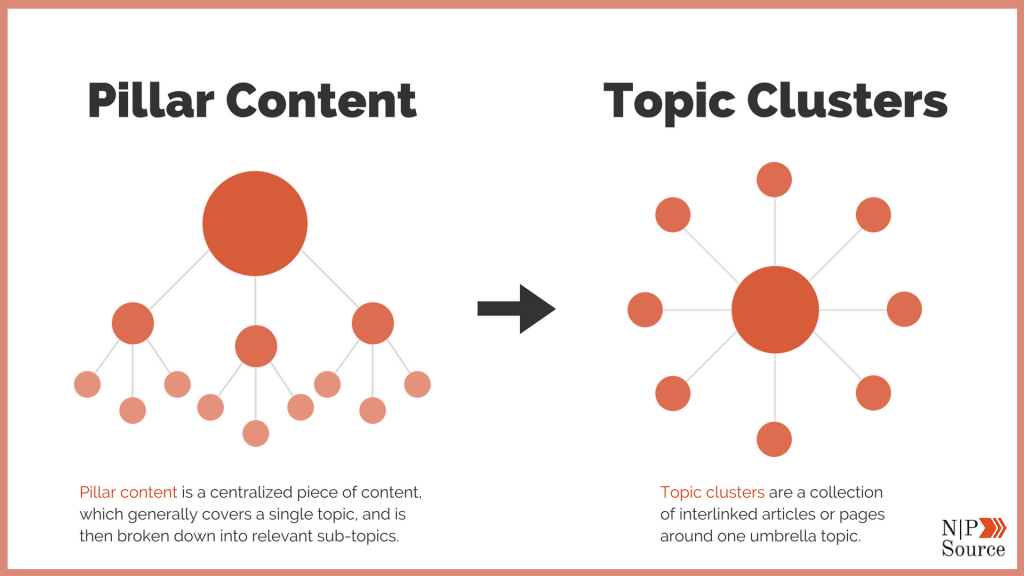
What Is Pillar Content And Topic Clusters?
So this is where we start to get into the real detail of it all.
Pillar content, as it says on the slide, is a centralized piece of content which generally covers a single topic and then it’s broken down into relevant relatives, relevant subtopics. For example, the American Heart Association, a pillar piece of content might revolve around the topic of a healthy heart.
Topic clusters go a little bit further by branching out into subtopics. Back to the example of a healthy heart, you might have topic clusters and each one of those small circles might be a, an individual article.
- What vitamins should I take for a healthy heart?
- How to keep your heart healthy and strong.
- What effect does smoking have on a healthy heart?
Going back to Google and how people are searching for information online and how do they stumble and find you as they’re researching or they’re looking for causes to contribute to. But it also builds authority and trust in the communities you serve because it positions you as a thought leader in that space.
The more information you talk about, the more depth you can provide, it really goes a long ways of showing that you have expertise and knowledge in those areas.
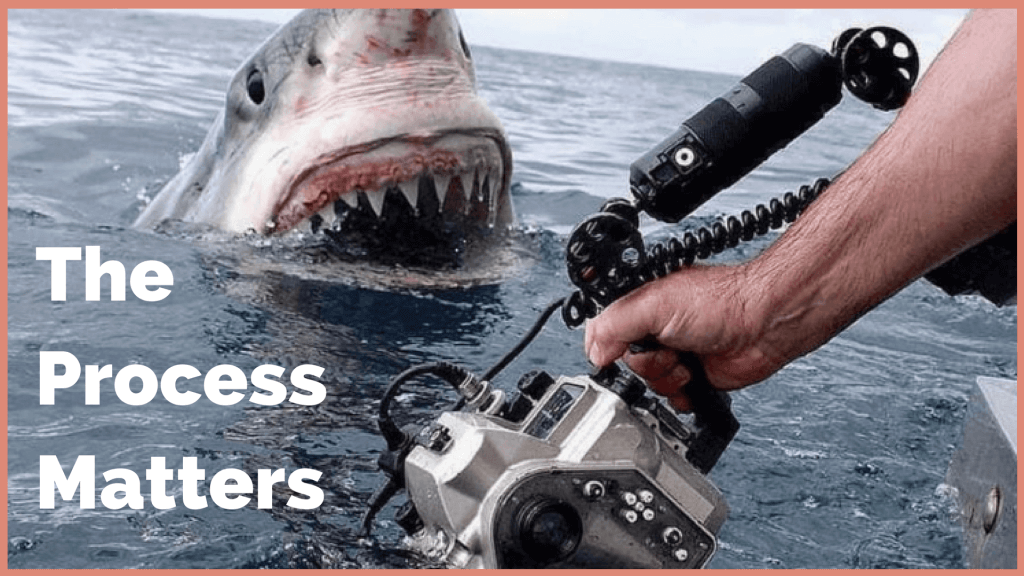
Create Content That Documents Your Process
Now I’ve found, I found this picture I think two or three days ago it was really interesting.
I think it really captures the text well. I always wondered how do they film all of these nature documentaries? If there’s a shark popping out of the water, how do they get these angles? The process really does matter. I cannot understate it enough. People want to see how you do the things you do.
They’re not just result oriented or it’s not just an emotional appeal. They want to see you go through the steps and kind of the behind the scenes. And that’s okay if you’re not perfect, you don’t have to fear putting yourself out there. People actually respond better when you’re not perfect because it shows an era of humanity.
So I think the process is really important and one thing that I did notice, in terms of the fear, I was talking to a client of mine and their, their hesitation with putting themselves out there as is fear of backlash in terms of hate online. My piece of advice if, if that’s the situation that you find yourself in, is to just be as cordial as you can be.
Tell the person who’s being hateful towards you that you’re sorry that they don’t see your perspective and then just be done with it. Just to ignore it. Don’t worry about it. But really think about how you can integrate that process into all of the content that you’re creating, especially video and especially if you can show that behind the scenes format. People responded very, very well with that.
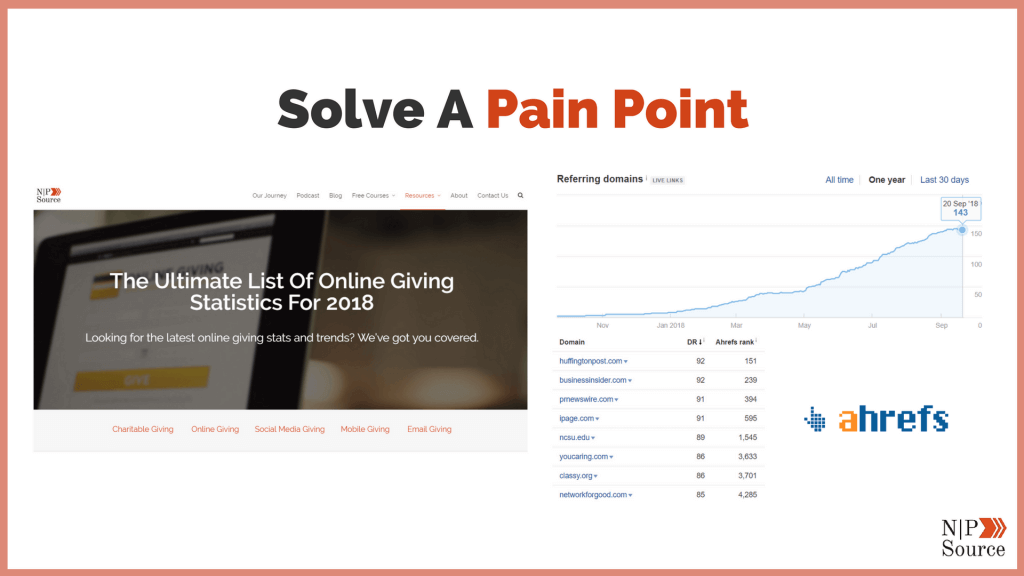
Create Content That Solves Audience Pain Points
The other part of, content is making sure that you can solve some type of pain point. So this is kind of an interesting story. When I first launched my website, a lot of other content that I was writing revolved around using data to support my claims, right? So I wanted to show that online giving is on the rise and that people are being more willing to give and contribute online.
And I found myself using a lot of statistics, but the problem was sourcing that information was very difficult. I found that I would have to go across 15 different websites. I had bookmarks for days. The list just went down to the bottom of the screen.
It was annoying. So what I ended up doing was I created a page that centralizes all of the information on giving statistics with hundreds of stats. And then I posted it online and then I forgot about. One day I was looking at some of the data and I started to see people were linking to my site.
Again, going back to earned media I was starting to get mentions online from really big organizations, Huffington Post, Business Insider, and a few education sites. I was really shocked because I never thought in my mind that this would take off the way that it did and I’m very thankful that it did, but it just goes to show that you never know what is going to happen when you put yourself out there.
One of the things I had mentioned earlier about generating backlinks to your site, is that you start to get a huge impact on ranking this page ranks for, I think today I check and the page has some 1200 different keywords that it ranks for and it ranks on the first page for a hundred keywords.
This page alone drives over 3000 monthly search traffic to my site each month. So that’s one aspect of it. It’s bringing in relevant traffic to my site. I found that other people were linking out to it to support their own articles. So it solved a pain point for them. So it wasn’t just me who is experiencing this, this issue of trying to source the correct information online, but other people were running into the same problem.
That’s the theory that I have behind why so many people are linking to my page and why Google believes that it’s relevant enough to rank for all of these pages.
One other quick note about the importance of generating these backlinks. It just wasn’t specific to this page. This page alone started to perform well, but other pages on my site started to perform as well. It’s really because each page shares the link equity across all of the pages that it’s linked to.
So for example, this online giving statistics page is linked out to a number of other pages within my site internally. As a result, those pages started to climb in the rankings as well, and the website as a whole started to become more visible in the space, based on the keywords that I’m targeting and a few other factors.
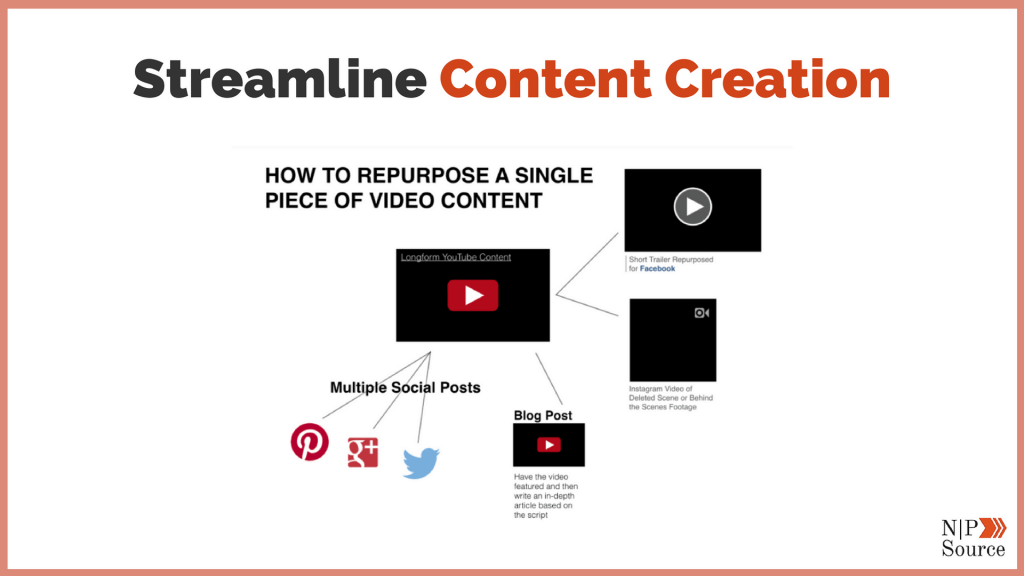
Streamline Your Content Creation Process
Another thing that’s really important is to streamline your content creation. Finding the time to write, create, produce, and promote and engage with your audience takes time.
It’s impossible to turn around a 3000-word article in a week. I guess you could, but I mean, you’re going to be taking a lot of time from other areas of your organization that you would rather be investing in.
So this is an interesting graphic because it shows how you can repurpose a single piece of content and promote across all of your different key channels. So for example, if I were to create a Webinar I might then take this, throw it up on my site as a blog post. I would upload it to YouTube.
I would then take a full transcript of this recording, throw it up online because that’s how Google ranks websites. It’s looking for text. It’s not quite sophisticated enough to read the actual video, but I have a feeling it’s going to get there soon and then I might try to repurpose it across all the different sites as you can see here.
And we’ll touch upon the specifics of that in just a moment. But it really does help streamline the process when you’re trying to get all of your content out there, especially if you’re already resource constrained or maybe you have you’re one person in the office wearing multiple hats and marketing was just something that got bestowed to you.
So just kind of think about different ways of how you can repurpose your content into all these different mediums specific to the platform that leads us to promoting your content.
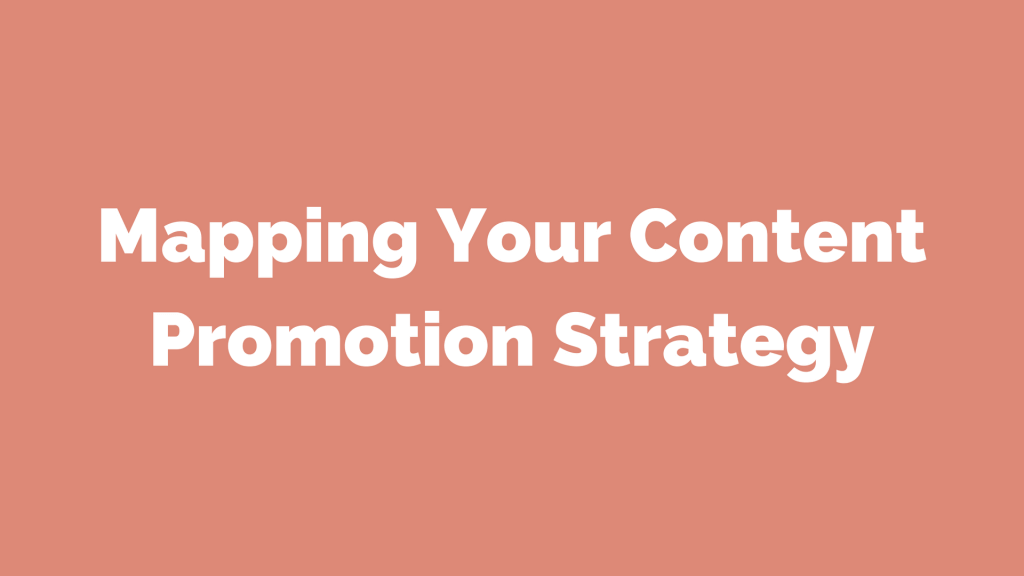
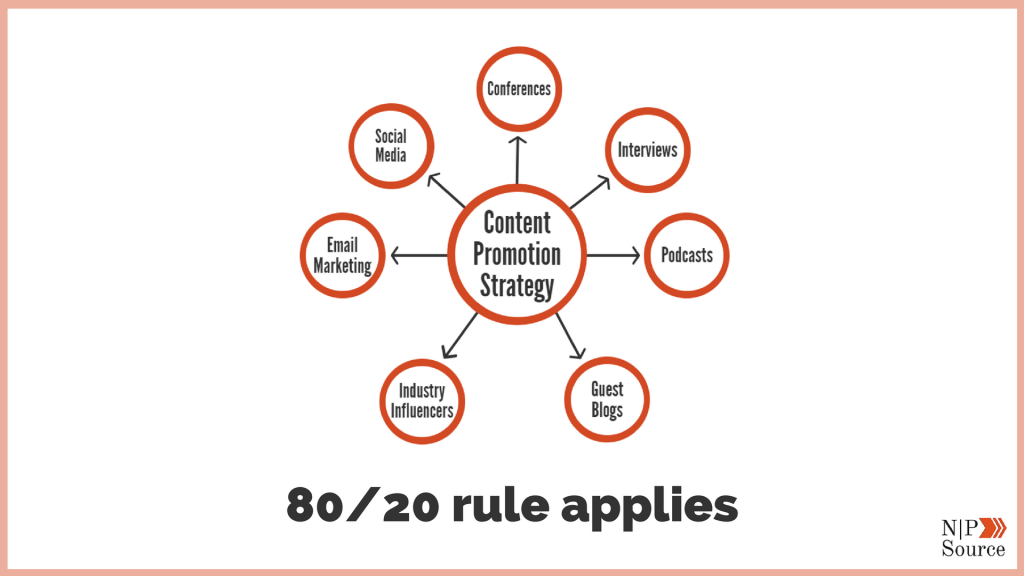
So really when it comes down to it, you want to do what resources allow you to do. If you can do all of these things, if you can get invited to podcasts, if you can write a lot of guests posts, if you can connect with industry influencers, if you can do all of these things, that’s great, but take it one step at a time, again, do what is available to you.
Also, try to get key stakeholders and staff involved as well acting as brand ambassadors that share content. I know that a recent research shows that donor is actually want to see executive directors and presidents and CEOs and board members contributing to the conversation because they’re often seen as thought leaders in the community.
You can also involve your audience as well. I had the pleasure of sitting down with Alisha Patterson, who is a marketing specialist at UCCC, and got to talking about their year-end giving campaign last year leveraging Facebook for the first time.
And what they did was they went out to their audience and they said, here’s a template that you can use. Go ahead and take this template and just put it up on Facebook write your story.
They’re an education organization who help serve underprivileged youth to excel their education to get them placed into high schools and colleges. And what they did was they went out to those that benefited from their services, and they asked them to share their story through the Facebook template and they said, here it is, share your story.
And I think at the end of it all said and done they not only reach their goal of $300,000 that year and you’re in giving, but they surpassed it. So it just kinda shows the power of that. And then the last part of it is the 80 20 rule applies. Again, you know, don’t get too caught up on creating content consistently, especially if you don’t have an established audience, chances are they’re not reading it anyway. If you have an audience of one, if you’re still trying to build up.
If you do have an audience, then consistency makes sense. But a lot of the times it comes down to 20 percent of your time should be dedicated to producing content and the rest of that should be dedicating to get the word out and, and promoting it. And I’m going to show you specifically how I would approach it.
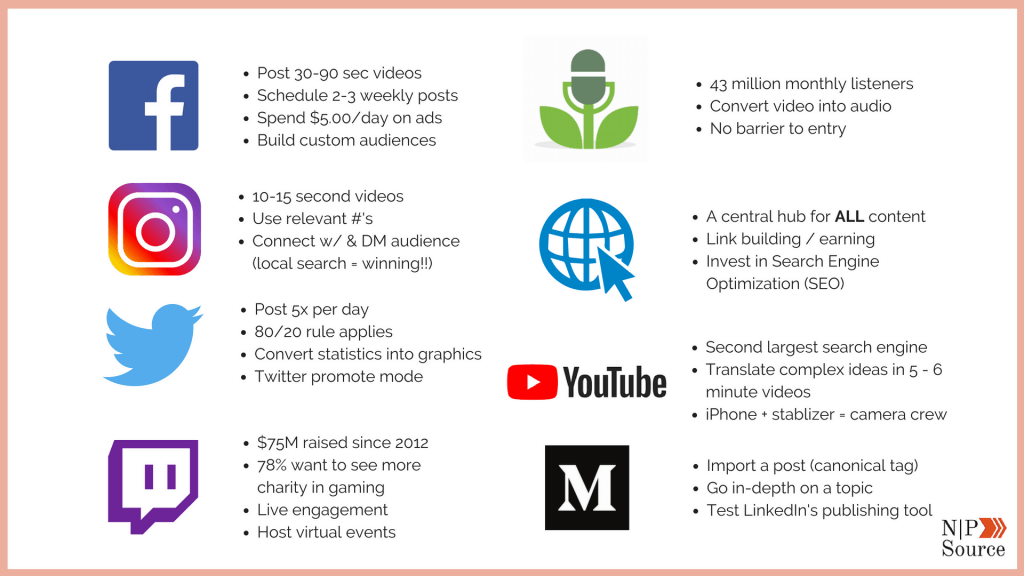
So take a moment to just kind of look over a few of these different platforms you might be familiar with some of the logos, but we’re going to take it from the left-hand column. Work our way down, starting with Facebook.
So with Facebook, video works really, really well. It doesn’t have to be something that’s overly produced. It does depend on your audience and that perception.
Honestly, an iPhone with a stabilizer, it gets the job done. I mean, you don’t have to worry about hiring an expensive production crew or anything like that. Facebook has a publishing tool, which is great because you can pre-schedule all of your posts.
I found that two to three times a week works pretty well whether you are trying to promote your content and maybe an event, a two to three times a week works really well if you have the ability and, and you’re interested in kind of seeing what ads can do trust, spending $5 a day, just see what, see what happens and you have absolutely nothing to lose except for your $5 a day, which that’s pocket change. You, you can find that. And then again, I was talking about earlier, building custom audiences.
Facebook is really very intelligent, scary sometimes almost, you, you can put a facebook pixel onto your website, captures that information.
And then you can create custom audiences. If you Google that, that’s one of the first page results. You can go there and you can actually create audiences based on pages that people view onto your site. And the way it works is it tries to connect that information that they have on that visitor with their data, with their data on their platform, and then when you create an ad, it tries to serve that ad to that individual.
So you could say, for example, for anyone who lands on my home page, or let’s say my donation page, anyone who lands on my donation page but didn’t give, I want to serve an ad to them and maybe that ad is not necessarily a direct sell, but maybe it’s a complimentary, something that, , to fill a knowledge gap or maybe it’s something to address a pain point.
Instagram works really well, 10 to 15-second videos, typically very emotionally driven. Hashtags are really big because that’s people look for the conversation. If that’s something that you’re interested in investing in a, then you can search top hashtags of the day, use them on your, on your post, as long as it’s relevant to the conversation. To try and get some awareness there. And then connecting and direct messaging people in your audience.
You can also do local targeting. I live in Bethesda, Maryland, so I might type in Bethesda, Maryland and then find people there, maybe do a few more searches and try and narrow down the audience a bit further and connect with them.
Twitter, I find that five times a day it works really well for me. The 20 80 rule applies again, 80 percent of the time it should be focused on someone else’s content that’s relevant to what you do.
Twenty percent of the time it should be your content. Converting graphics and statistics into graphics is really good as well. I noticed a lot of Infographics do very, very well in terms of reach. Twitter Promote mode is relatively new, $100 a month. It helps to promote your, your content on online and increase that, reach past the audience that follows you.
The next one is Twitch.tv, so it’s a live streaming platform and it’s, it’s big in the gaming community, although it’s spread out into different areas. Since 2012, Twitch has raised over $75,000,000 for charities. Self-surveys of the audience members says that 78 percent wants to see more charity and gaming. You can have live engagement, you can have staff present while you’re hosting a virtual event.
I know Doctors Without Borders has been doing a virtual event for the last seven years, called Summer Games Done Quick. This year they raised $2,000,000 in a week.
So the platform is huge and there are plenty of people that are on that platform making six figures, sometimes in some cases, if they’re popular, they’re making six figures a month. So it’s a really, really interesting platform. And if you’re interested in video and you’re interested in live video, really do check that out.
Podcasts
As I mentioned, 43 million people listen to podcasts monthly. You can convert any type of video that you have and their audio format, again at disseminates center information and there’s really no barrier to entry.
You can get your iPhone recorder and be done with it and then posted up online and again like you can syndicate that across iTunes, Google Play, Stitcher, all of these different platforms, your website is a central hub for all of your content.
Website
I truly believe that your website is the most valuable asset of any digital asset, any digital asset, simply because you have 100 percent control over it.
Again, link building. We talked about that earlier. I think that leads into investing in search engine optimization. It’s, there’s a lot of potential in that area, especially for nonprofits, at least according to the research that I’ve done.
So take that with a grain of salt. It’s starting to show signs of investments, particularly in the larger organizations, but it’s starting to trickle down to the smaller ones.
Youtube
Mentioned earlier in the data from Jumpshot, YouTube is the second largest search engine in the world. Video is an interesting medium because you can translate those complex ideas and in the five, in five to six-minute videos, whereas it might take a book to, to accurately explain all of that information.
Again, iPhone plus a stabilizer is your camera crew. If you want to get a little bit fancier with it, again, I would work to outsourcing that. You can probably do it for a couple thousand dollars, I would say is really what the threshold is. But, there is actually a came across something recently where an organization produced the thousand dollars video.
That was their budget and it was, it was actually phenomenal. So you find, find the right people, you can do a lot. And then another thing, the last one here is medium.
Medium
You can actually import your written posts into medium and it says there, the canonical tag, that’s an SEO term so that you don’t have duplicate content issues that would plummet your rankings.
And then there’s also Linkedin’s publishing tools. So there’s a lot of different things you can do. She’s got to get your word out there.
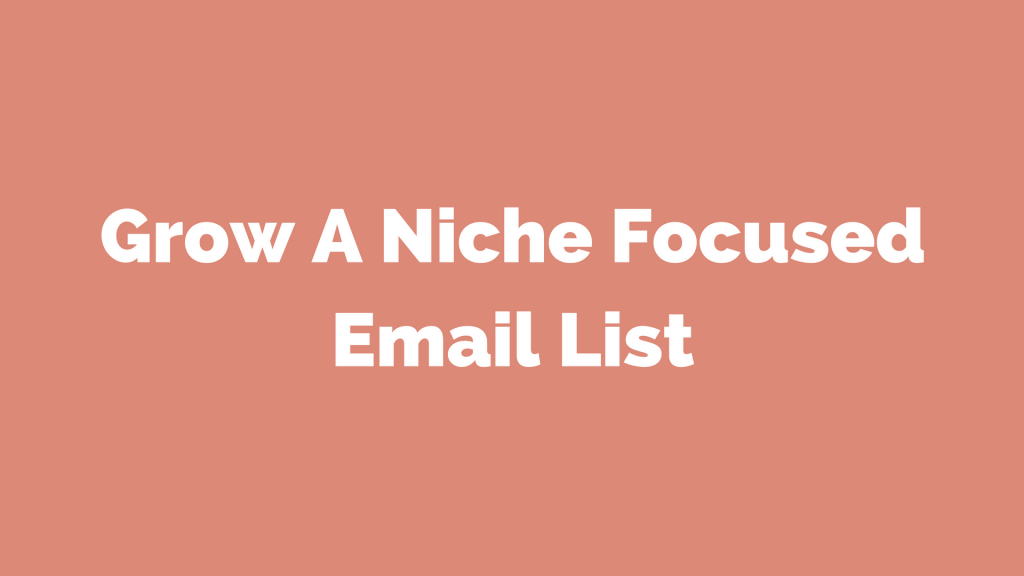
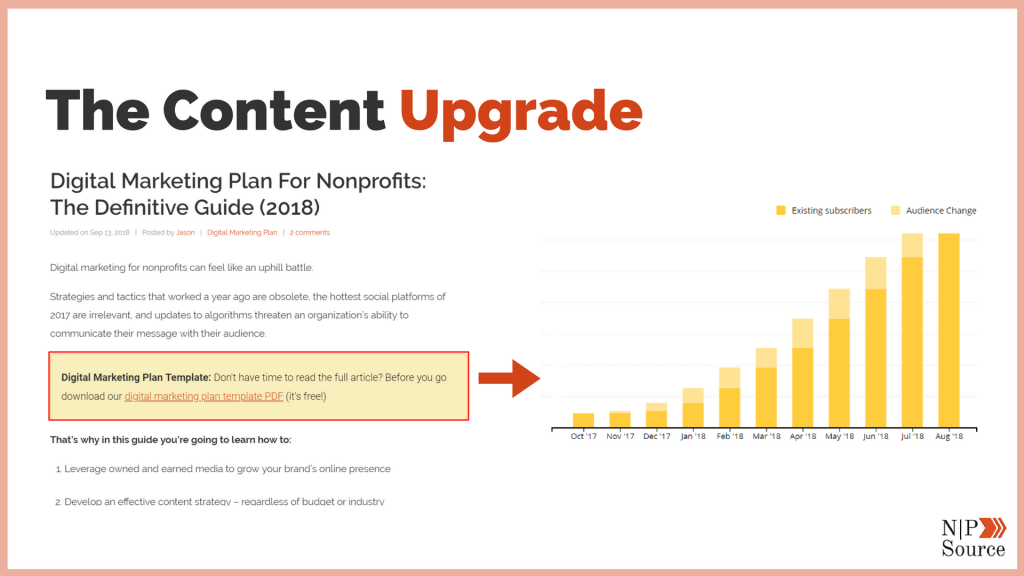
How To Grow A Niche Focused Email List
So now I want to talk about growing a niche focused email list and how, how I built the audience that I have today.
A content upgrade is a really interesting one. It was coined by Brian Dean of Backlinko. He’s an expert SEO, and he came up with this concept where if you have a long-form blog post and you offer something that’s not available in that post as a download, people are willing to give up their email for it. So what kind of content should it be?
I think it should be something that provides additional value to your audience. What I have here is a free template. It’s a 130page document it goes into excruciating detail of how to formulate a marketing plan. It’s the playbook I use. It’s a little bit of a snore fest, but it is something that really does work if you want to put the time into it.
And the graph to the right there is my actual email growth over time. As you can see it took a year to really start to ramp up. But over time if you give it the time and you nurture it and you give the right offer, it really does work and you know, try and play around with it. I’ve, I’ve played with a few different offers when I find that template works really well for my audience.
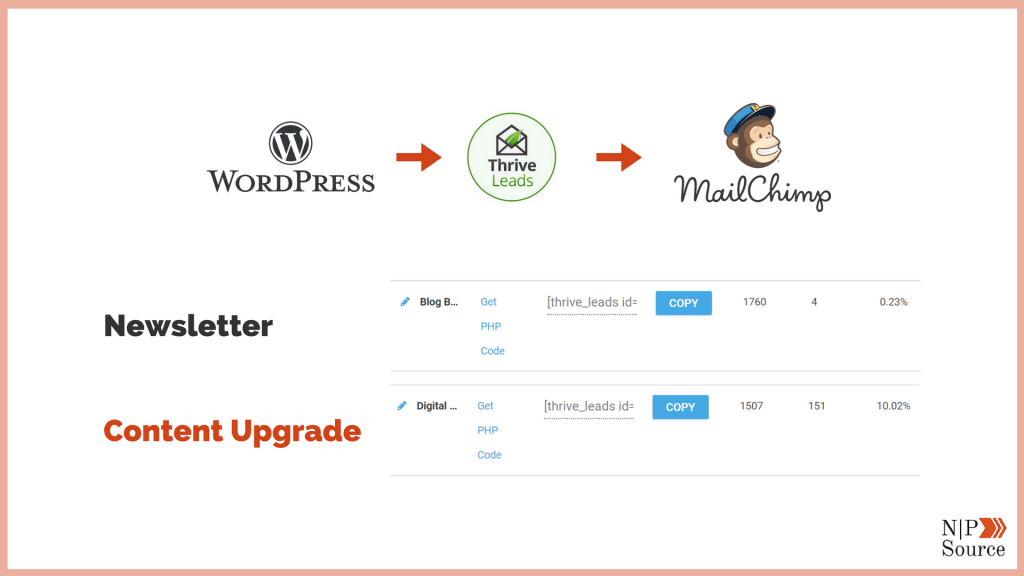
Newsletter vs Content Upgrades
So I use WordPress as my content management system (CMS). I use thrive leads, which thing connects to MailChimp. It’s just a way for me to create those call to actions and then connected through Apis, integrations to MailChimp.
And what I found is that the content upgrade converts 10 percent of the time, whereas my newsletter offer hardly converts at all
A little bit of food for thought. For me personally, I don’t sign up for newsletters anymore. Most of them don’t really offer anything of value. Radiolab is one exception if you’re interested in listening to a podcast, I highly recommend them, but it just kinda goes to show that the content upgrade theory does work.
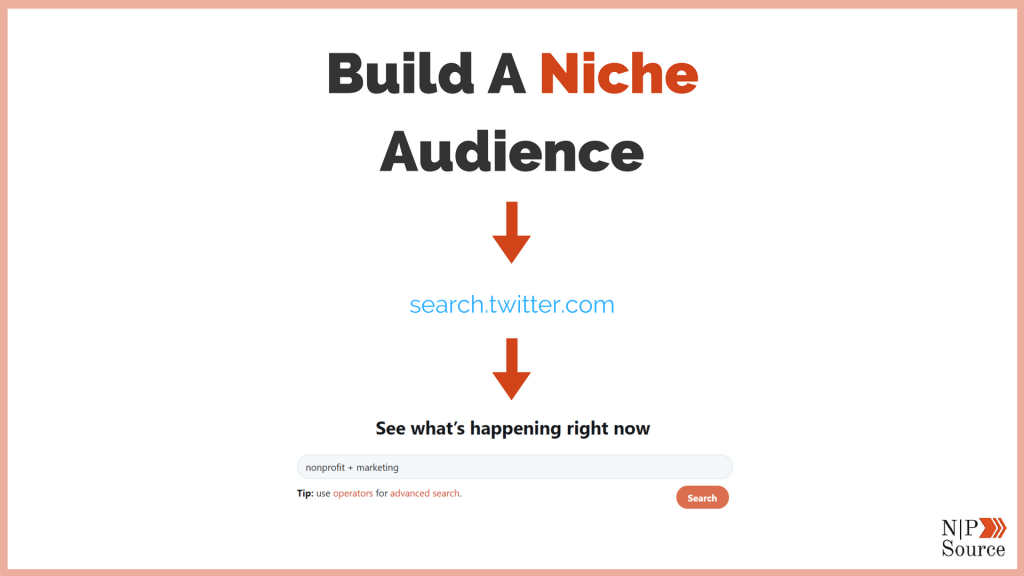
How To Build A Niche Audience
How do you connect with people online? One of the things that I started doing, I invested into twitter so you can go to search.twitter.com and then you’ll have this little screen appear here with a little bar and then type in keywords that are relevant to your audience.
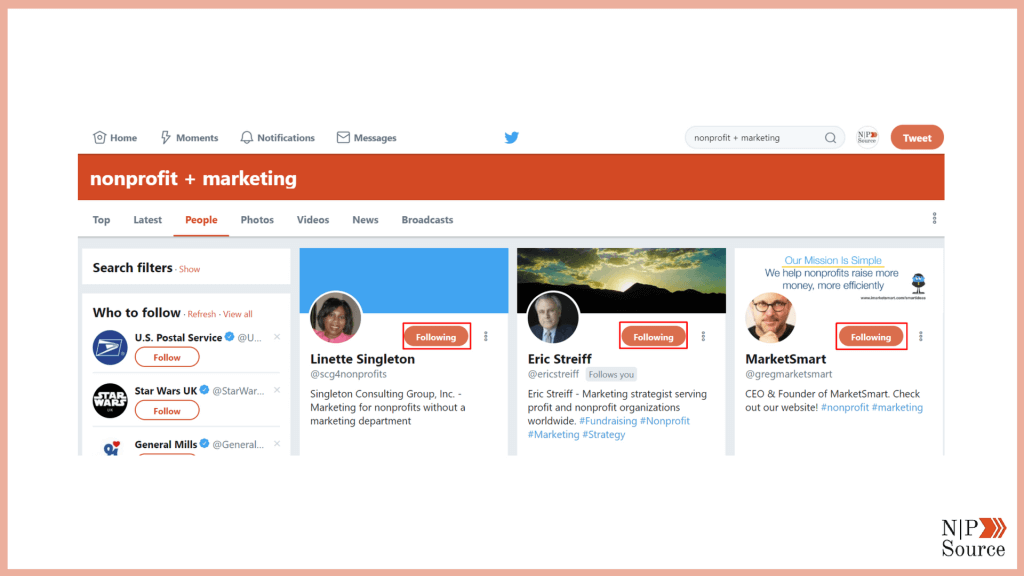
For me, nonprofit marketing is one of them. And then follow every single person there. If you can offer additional value, if they allow you to direct message them without being a follower reach out and say, hey, how can I help you?
But really what you’re trying to do is connect with like-minded people who would be willing enough to donate their time through volunteership or monetarily.
You want to build a very niche focus audience because it’s easier to sell to, quite honestly, than it is trying to market to the general public because the hope is that you’re speaking to their specific needs.
And again, on their own terms, I find that it works exceptionally well on Linkedin as well. And the great thing about Linkedin is when you go to connect with someone, you have the option to give them a message before you connect with them, make it super personal, make it very customizable and again, speak to their needs.
I think you only have 150 characters, but try and prove your value proposition to them why it would be worth connecting with them in that time and moment.
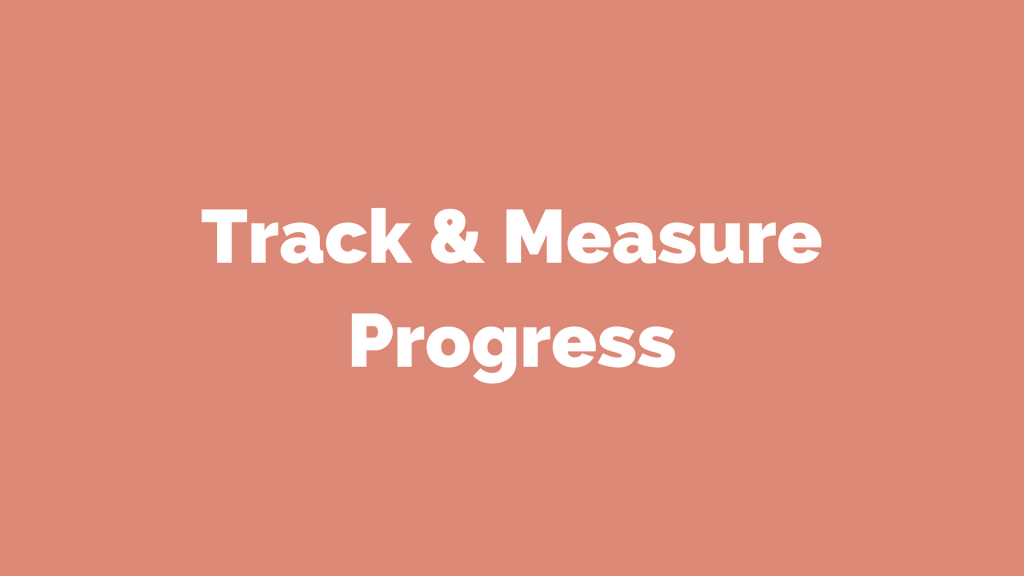
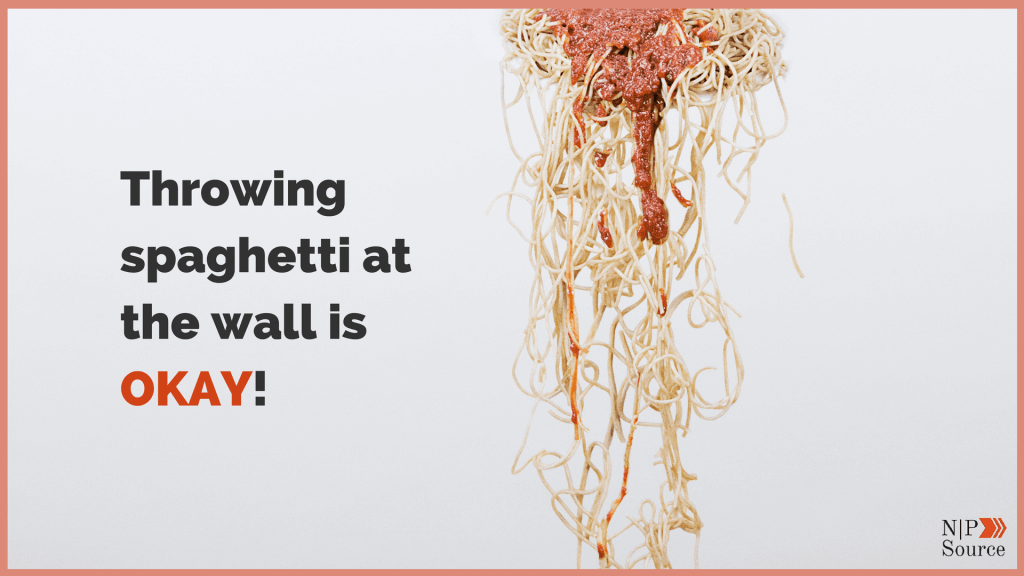
Track And Measure Digital Marketing Campaigns
I’ve talked about a lot of different things that you can do. It may not seem like it. There’s purpose behind throwing spaghetti at the wall really does work and really it comes down to how do you know what will work until you try it out.
And the idea is to start to weed out the underperformers, identify the areas and the channels that start to gain traction. Then dump the underperformers while doubling down investments on the winners, and then once you start to see a particular platform, start to Plateau and growth, move on to the next one and then see if you can build and develop that niche audience on the next platform.
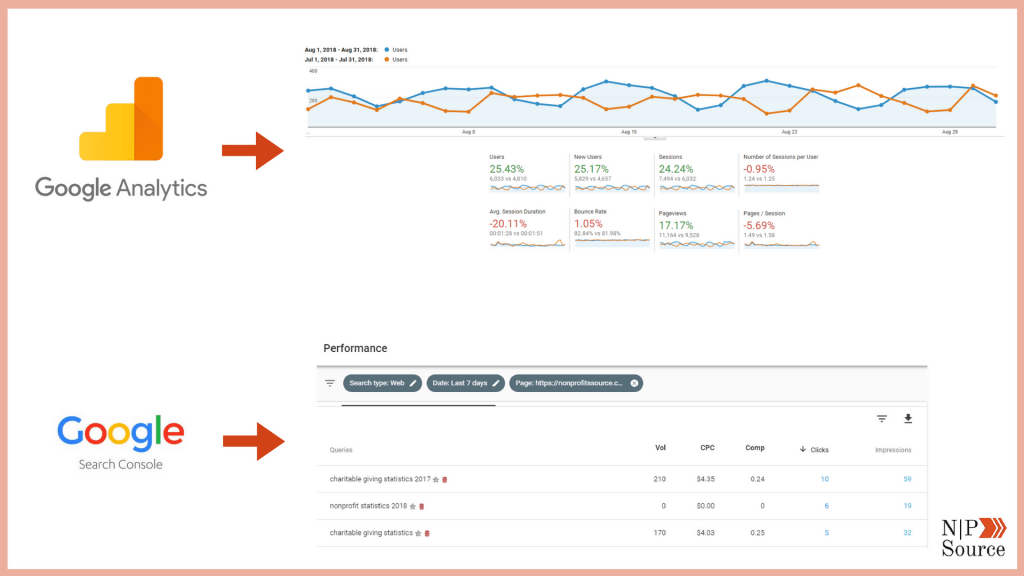
Google Analytics And Google Search Console
This is actual traffic data, so Google Analytics and Google search traffic or Google Search Console are free tools are offered by Google, fairly easy to set up on your website. It’s just a little bit of tracking code.
So the top is actual performance of my website, so a 6,000 view a monthly visitors last month and then google search console, those are some, actual impressions and clicks within the last seven days.
There’s also queries that people have clicked on to view my website and we can really dive into the specifics of it, but, you know, leverage this data the best you can. So specifically looking at Google analytics, bounce rate page, average time spent on page kind of give you an idea of whether or not someone enjoyed your content from whether it was relevant or enough to them or not.
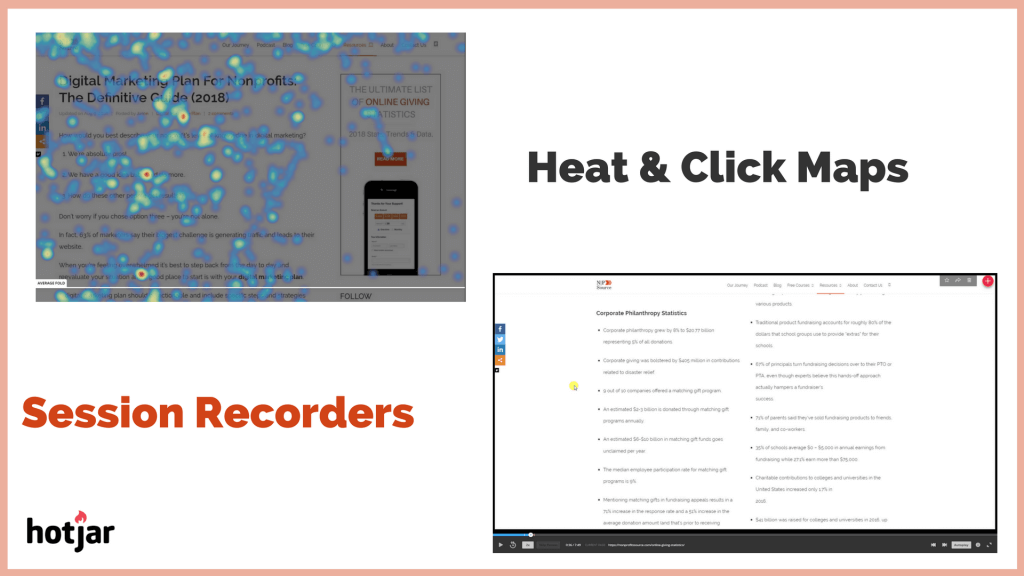
Heat Maps And Session Recorders
You can also put on a heat and click maps or session recorders.
Hotjar is one that I’ve used. You can see how people engage with your content either through clicks or an actual recorded session. How did they navigate through your page? That’s a really interesting one.
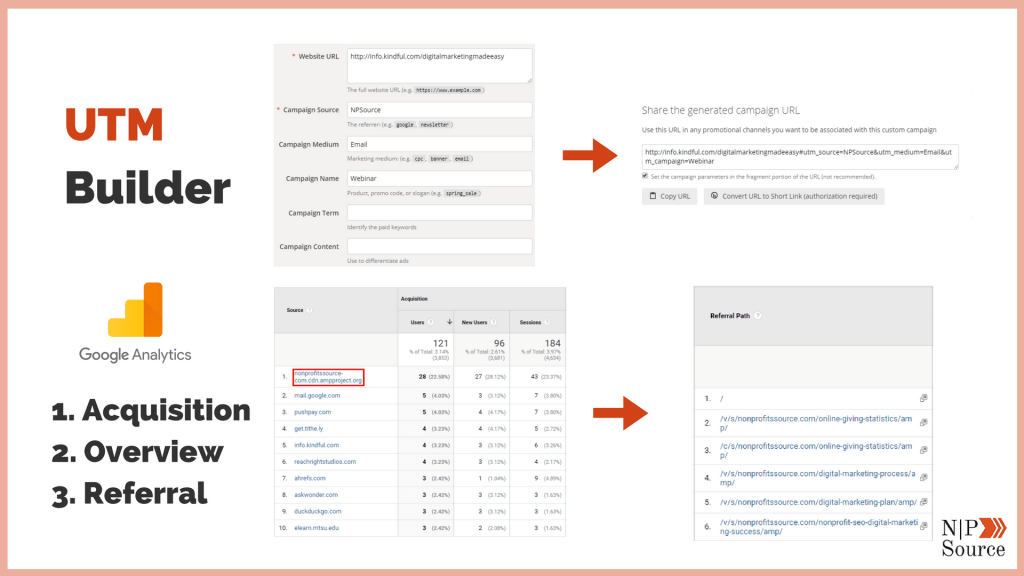
UTM Builder
UTM builders is really interesting as well. You can track and identify exactly where your conversions are coming from what campaign. Definitely look at it. In Google analytics you can go to:
- Acquisition
- Overview
- Referral
You can then dive into where’s that traffic coming from and how you’re converting.
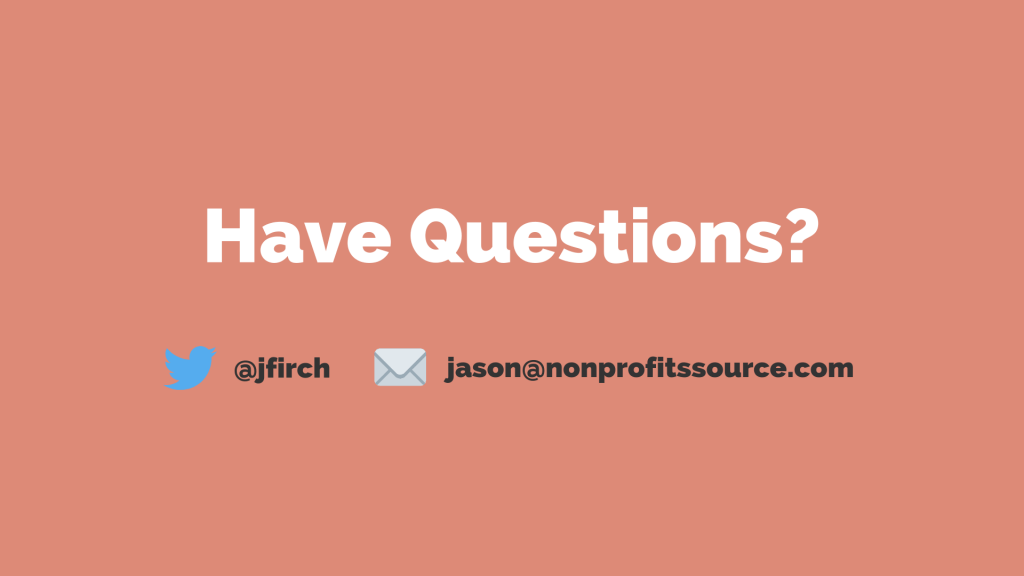
I think that’s. It was a bit of a quick one, but, I hope that there’s some value there for you.
